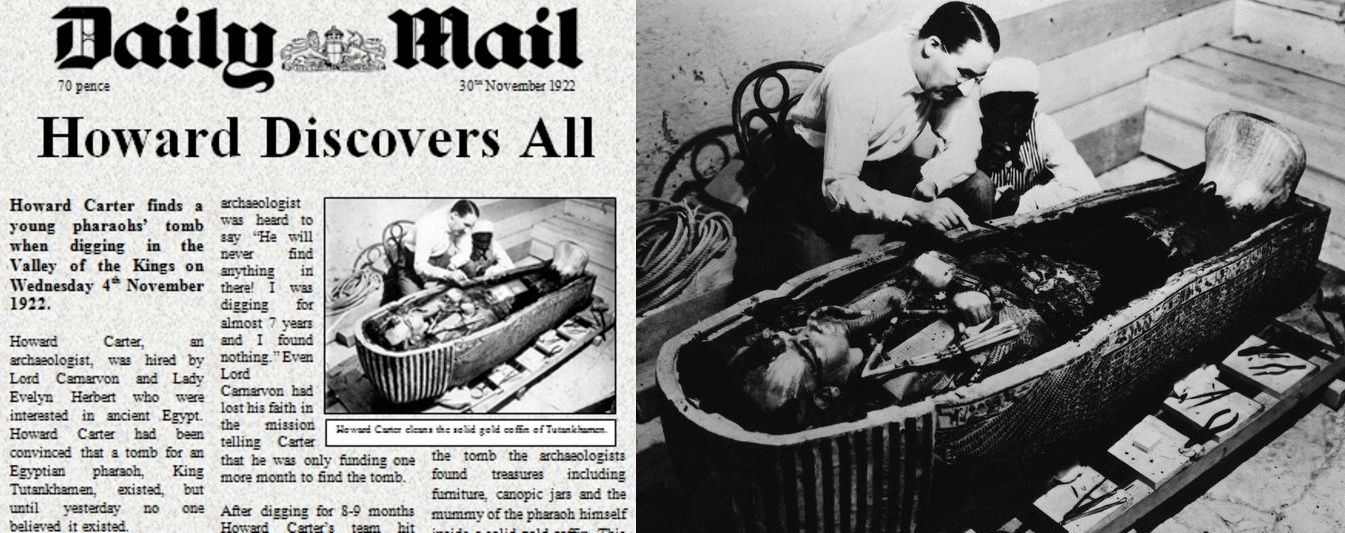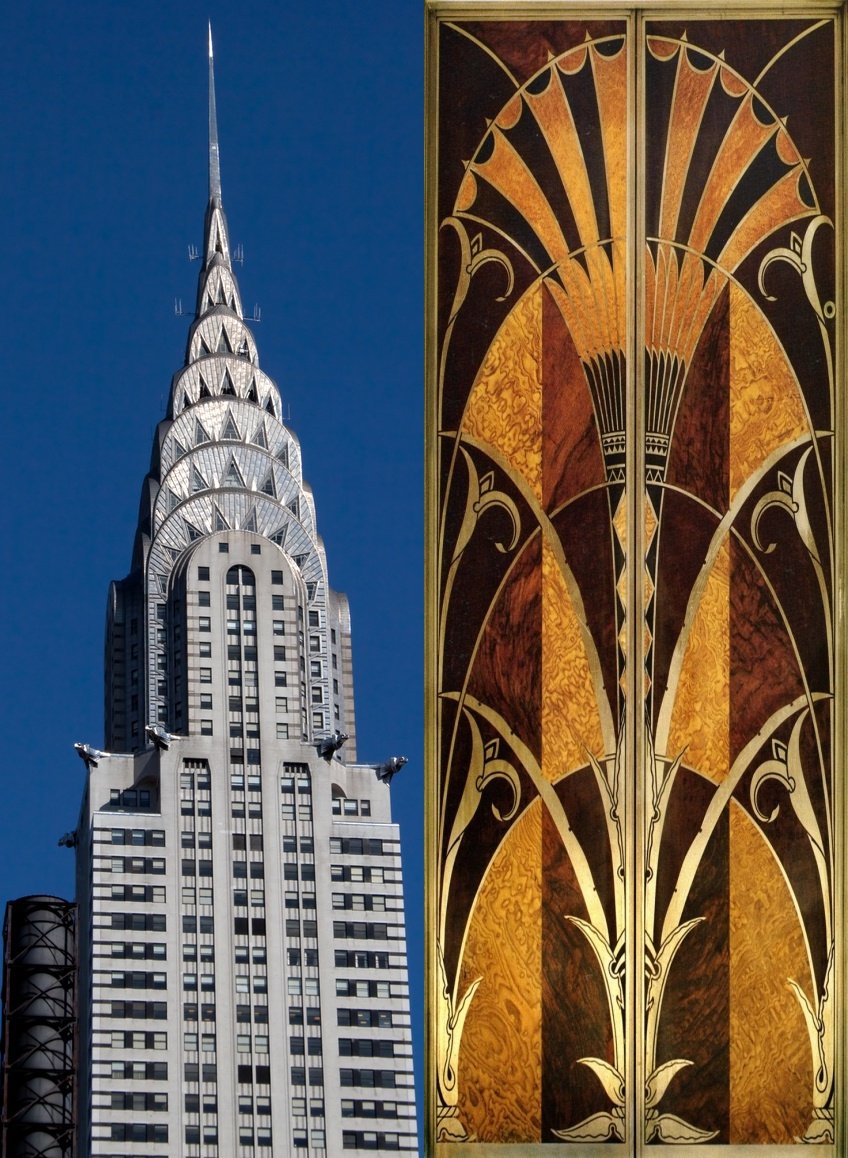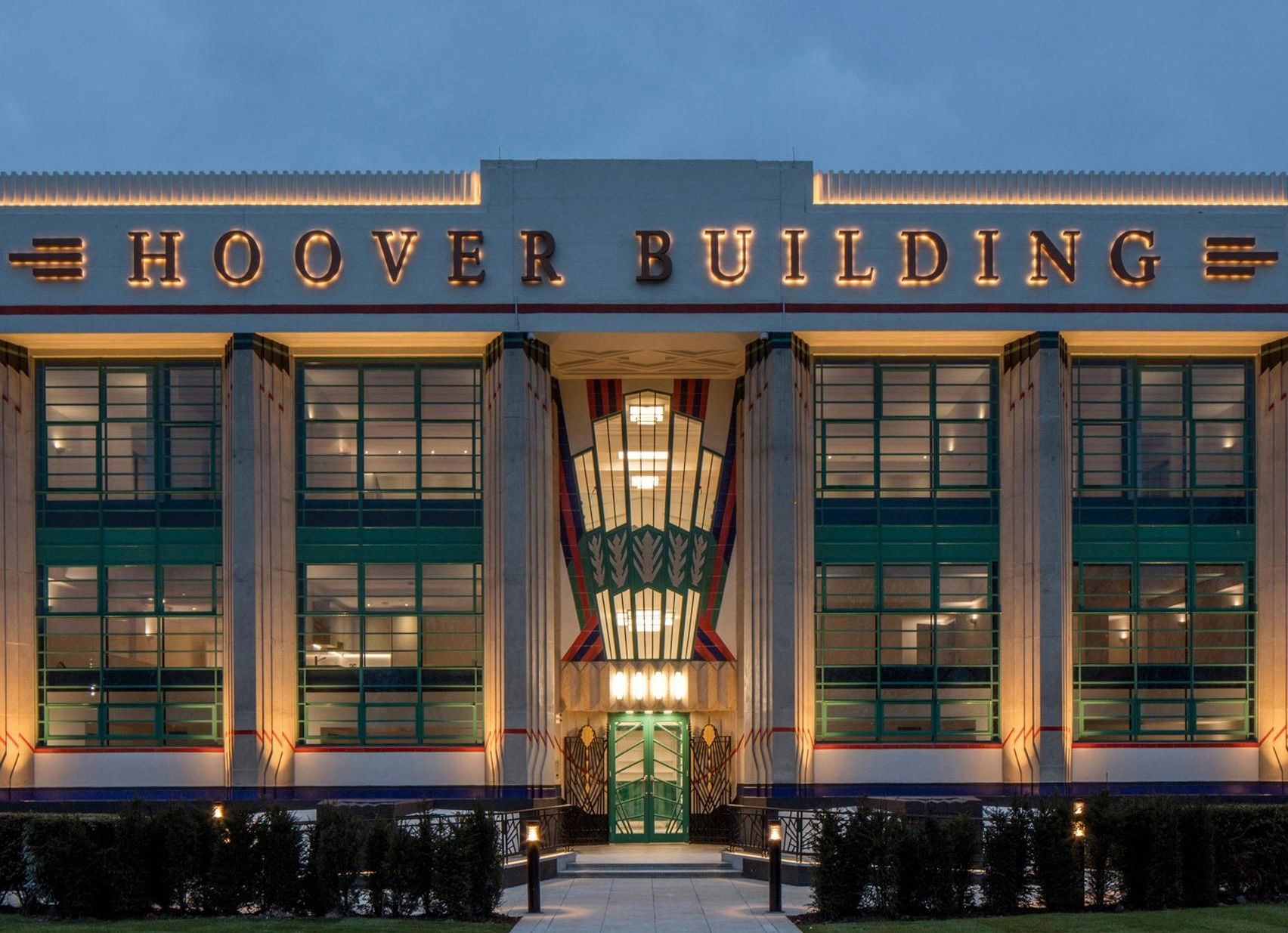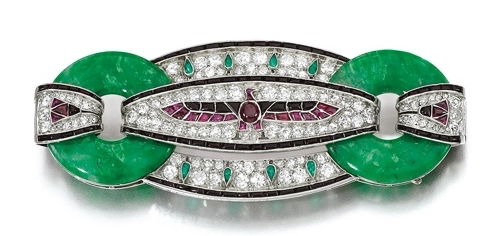In the Valley of the Kings on 4th November 1922, a young water boy accidentally stumbled on a stone that turned out to be the top of a flight of steps cut into the bedrock. Lord Carnarvon and Howard Carter had begun their excavations in the Valley of the Kings as early as 1914, interrupted by the First World war, and by 1922 Carnarvon had become dissatisfied with the results and so he and Carter agreed to fund one final year of excavations. The chance discovery on the 4th of November 1922 was to change global decorative design for ever, no one, not even Carter could have envisaged the effect this accidental finding would have on the Western aesthetic. The steps led down to a doorway emblazoned with ancient cartouches. On the 26th November Lord Carnarvon arrived at the dig and made the first breach into the fabled tomb of Tutankhamun. Making a small opening into the top of the doorway Carnarvon asked, “Can you see anything?” Carter replied, “Yes, wonderful things!”, (see image 1).
Art Deco's fascination with Ancient Egypt
With the discovery of the tomb of Tutankhamun in Egypt now nearly 100 years ago, Justin Roberts, Jewellery Specialist, Historian and Lecturer, considers how the re-discovery of ancient motifs and designs came to influence Art Deco, the most modish of aesthetic movements.

Image 1: The Daily Mail announces the discovery of the tomb of Tutankhamun | Howard Carter examines the young pharaoh's sarcophagus.
In 1923 the Daily Express sent H. V. Morton to Egypt to cover the excavation of Tutankhamun’s tomb. Morton was able to circumvent The Times’ exclusive rights to the discovery and his account was to fire the imagination for all things Egyptian: “The romantic secret of the tomb of Pharaoh Tutankhamen in the Valley of the Kings at Luxor was revealed yesterday when, for the first time in 3,000 years, the inner chamber of the tomb was entered. Every expectation was surpassed. Within the chamber stood an immense sarcophagus of glittering gold, which is almost certain to contain the mummy of the king. Wonderful paintings, including that of a giant cat, covered the walls. A second chamber was crowded with priceless treasures”, (see image 1).

Image 2: The Chrysler Building, New York; the construction of the Art Deco skyscraper commenced in late 1928 and the building was officially opened in May 1930, it was the first man-made structure to measure over 1,000 feet in height | The door to the elevator in the lobby of the building.
Ancient Egypt had always held a fascination amongst the decorative arts, sparking many revivals of Egyptian-inspired decoration, from Regency England to Napoleonic France, to Verdi’s operatic extravaganza Aida written to celebrate the opening of the Khedivial opera house in 1871. This however was different. It was the first time an intact Royal tomb filled with invaluable material had been discovered. The unearthing revived a romantic fascination with ancient Egypt at all levels and was immediately incorporated in to the Art Deco oeuvre.

Image 3: The Hoover Building, West London, which opened in May 1933.
One of the most iconic examples of Egyptian Art Deco is the Chrysler Building, New York, designed by William van Alen. Constructed from a steel frame and surmounted by a spectacular metallic spire that rises in a series of ascending curves based on sunbursts, all emulating platinum. The lobby of the Chrysler Building is equally spectacular, lined in amber-coloured marble with lustrous metallic fittings and elevator doors with a design based on the Egyptian papyrus flower, (see image 2). Similarly, the famous Hoover building in London designed by Wallis, Gilbert and Partners as the headquarters for The Hoover Company with its dramatic geometric sunbursts also pays homage to Ancient Egypt, (see image 3).

Image 4: Cartier's advertisement, January 1924, in The Illustrated London News, promoting modern jewellery 'set with real antiques'.
In January 1924 the jeweller Cartier placed a full colour advertisement in The Illustrated London News featuring Egyptian-inspired jewels, (see image 4). Cartier’s jewels were actually Ancient Egyptian, incorporating antique Egyptian faience figures and plaques, embellished with precious gems and set into an array of multicoloured jewels following the Jazz Age trend for vibrant colours and extravagance. One of the most iconic of these jewels was a fabulous brooch in the form of an Egyptian fan or Flabellum centring on an ancient green glazed faience bust of the goddess Sekhmet, set against a backdrop of the night sky rendered in lapis lazuli and diamonds. This fabulous brooch starred in the middle of the advertisement in The Illustrated London News alongside pendants and earrings all incorporating genuine Egyptian relics.

Image 5: An Egyptian Revival jewelled fan brooch, Cartier, London, 1923, set with an Ancient Egyptian faience plaque, circa 600 B.C.
The house of Cartier was highly inventive when creating objects in the Egyptian taste, (see image 5). Vanity cases set with ancient Egyptian calcite plaques were ingeniously split in half to embellish both sides. In one instance Cartier created a vanity case in the form of an Egyptian sarcophagus complete with its own mirror stand to be displayed as a miniature work of art, the lid was set with a carved bone fragment depicting an Egyptian figure believed to be ancient when Louis Cartier purchased it from a Paris dealer, although it is now thought to be more modern. The most famous Cartier creation in the Egyptian taste must surely be the Temple Gate clock, inspired by the Gate of Khons, created in 1927 and sold in 1929, it was embellished with mother of pearl panels engraved with Egyptian hieroglyphs.

Image 6: A fine ruby, sapphire and diamond Egyptian Revival bracelet, by Lacloche, Paris, circa 1925. The jewel appears in the Bracelet section of the 1920-1940 chapter of the online Understanding Jewellery.
The silver screen was quick to build new Art Deco cinemas in the exotic Egyptian revival taste with romantic names such as the Luxor. Grauman’s Egyptian Theatre on Hollywood Boulevard was built to showcase new films, notably, The Ten Commandments, 1923, whose grandiose set of Egyptian temples helped to fire the public imagination for all things Egyptian, and Cecil B De Milne’s Cleopatra staring Claudette Colbert of 1934.

Image 7: An Egyptian Revival jadeite, gem-set and diamond brooch, Lacloche Frères, Paris, circa 1925
The Egypt mania was to continue into the 1930s but with a more monochromatic palette, as in the case of the Cartier ‘Halo’ tiara of lotus flowers created in London for the Begum Aga Khan in 1934. Conversely Van Cleef & Arpels had chosen a slightly different approach to this new craze favouring exquisite jewels embellished with buff top multi-coloured gems depicting Egyptian deities and lotus blooms in a distinctive 1920s’ outline. The favoured workshop was Rubel Frères, before their relocation from Paris to New York in 1939 when they were to become rivals to Van Cleef. Lacloche, Tiffany & Co. and many other contemporary jewellers produced stunning jewels of similar design, (see images 6, 7 and 8).

Image 8: A diamond and coloured stones Egyptian revival bracelet, circa 1925. The jewel appears in the Bracelet section of the 1920-1940 chapter of the online Understanding Jewellery.
Boucheron meanwhile took inspiration from the colour palette of Egyptian artefacts, their fabulous corsage ornament was specially created for the 1925 Paris Exposition in the form of lotus leaves embellished with lapis lazuli, coral and jade – its form and colours are clearly Egyptian in inspiration, (see image 9).

Image 9: A selection of jewels exhibited by Boucheron at the Paris Exposition of 1925
Ancient Egyptian artefacts were inherently luxurious, the few surviving examples had after all been buried in the tombs of the elite of Egyptian society: pharaohs, nobles and priests. This made them instantly synonymous and compatible with the luxuriousness and decadence of the Art Deco style.
